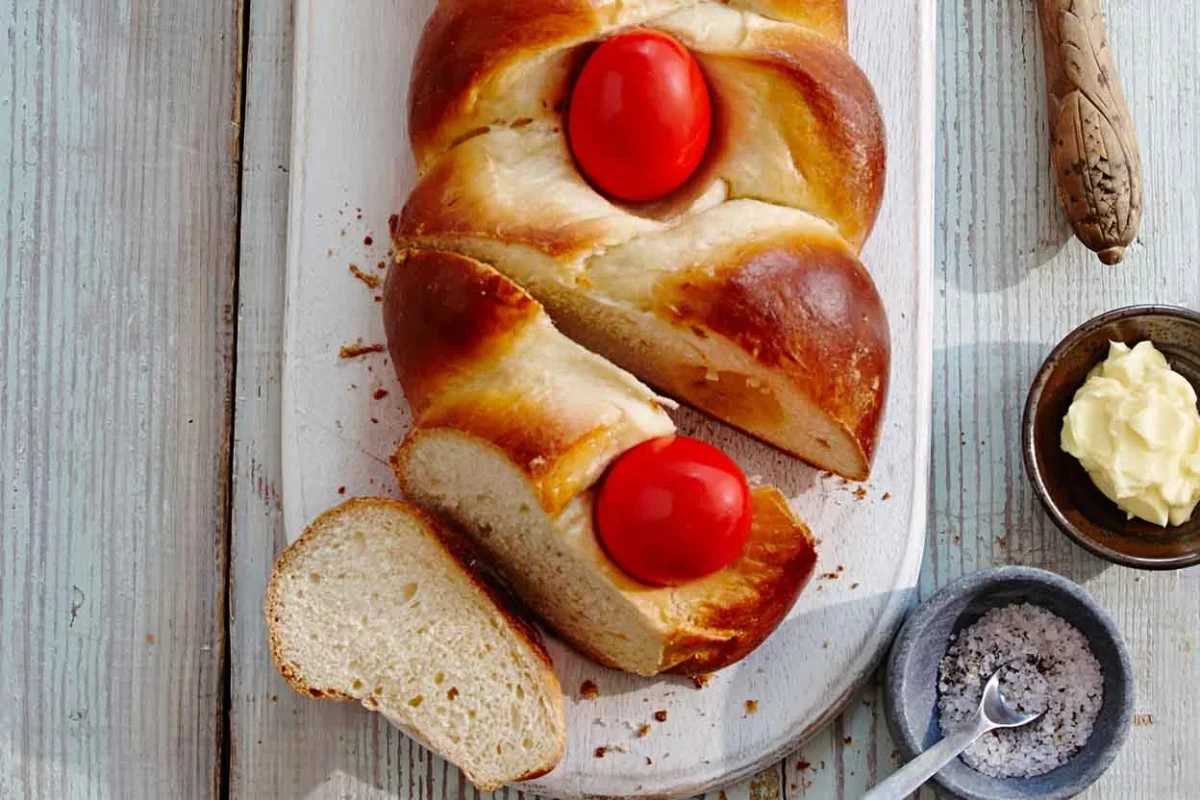As the spring season approaches, so do more exciting holidays. Which ones you may ask? Easter and Passover! These two holidays always have some of the most delicious food and interesting recipes that everyone can enjoy and have on their dinner tables.
Easter Sunday was created by the First Council of Nicaea to honor the resurrection of Jesus Christ. The Bible shares that Jesus died on a cross on Good Friday, which is the Friday before Easter, and was then resurrected and came back to life on the following Sunday.
Baking and Easter are one duo in my house that can never be separated. A recipe that is a classic in my rich Italian family is the Italian Egg cookies. Introduced to my dad by my Great Aunt Rose, these cookies have become so loved in my household. While they can be made in any form, my family and I follow a tradition of dying eggs and placing them in the center of the sprinkled cookie. This is a sweet treat no one will ever get tired of and must try this spring season!
Ingredients:
For the Dough:
8 cups all-purpose flour, plus more for dusting
5 tablespoons plus 1 teaspoon baking powder
12 large eggs
2½ cups granulated sugar
2 cups vegetable oil
1 teaspoon vanilla extract
1 teaspoon anise extract
Zest of 2 lemons
Colored hard-boiled eggs (optional)
For the Icing:
2 cups confectioners’ sugar, sifted
2 to 3 tablespoons milk or water
1 tablespoon fresh lemon juice
1 teaspoon vanilla extract (optional)
Nonpareils
Directions:
- In a mixing bowl, combine the 8 cups of flour and the baking powder. Set aside.
- In a separate, large mixing bowl, whisk the eggs for 2 to 3 minutes.
- Add the sugar, whisking until combined. Add vegetable oil, vanilla, anise extract, and lemon zest.
- Slowly add the flour mixture, mixing until well combined. Refrigerate for 1 hour.
- Preheat the oven to 300 degrees and line two baking sheet pans with parchment paper
- Using a medium cookie scoop, scoop the dough and place it on a lightly floured surface.
- On a flour-dusted work area, roll the dough into ½-inch by 5-inch logs.
- Wrap the dough logs into concentric circles (like a spiral), tucking the ends up or down.
- If you’re using hard-boiled eggs, nestle one in the center of each dough circle and criss-cross it with two ropes of dough.
- Place the cookies onto parchment-lined baking sheet pans.
- Bake for 16 minutes or until the bottoms of your cookies are lightly browned.
- Let them cool and in a bowl, combine the confectioners’ sugar, lemon juice, and 2 tablespoons of milk or water. Mix until smooth.
- Pipe icing on however you like!
While Easter Egg hunts and the Easter Bunny take over the essence of Easter, Orthodox Easter and Greek cultures have so many other recipes and delicious meals that not many people may know of. Orthodox Easter prioritizes the resurrection of Jesus and honors religious beliefs through symbolic meals and treats. Presented to me by the Nonas and McCallister families, a traditional tsoureki bread can be enjoyed with coffee, butter, or jam.
“My Great Yiayia and my Yiayia make it every year to eat because it’s a tradition. The dyed red and cracked eggs represent Christ’s resurrection so that’s why we make it on Easter,” Senior Darin Nonas shared about her grandmothers’ tradition.
This deep connection to symbolism and tradition brought to life by the Tsoureki bread, creates a sense of warmth in Orthodox homes, where each bite carries the significance of family and faith, making it a perfect treat to enjoy the Easter season.
Ingredients:
For the dough:
500g (4 cups) all-purpose flour
100g (½ cup) sugar
10g (1 tbsp) dry yeast
120ml (½ cup) warm milk
2 large eggs
60g (¼ cup) unsalted butter, melted
½ tsp salt
½ tsp ground mahlepi
¼ tsp ground mastiha (optional, but authentic)
1 tsp orange zest
For the egg wash:
1 egg yolk
1 tbsp milk
Directions:
- In a small bowl, dissolve the yeast in the warm milk with a teaspoon of sugar. Let it sit for 5-10 minutes until foamy.
- In a large mixing bowl, combine the flour, sugar, salt, mahlepi, mastiha, and orange zest.
- Add the yeast mixture, eggs, and melted butter to the dry ingredients. Mix until a sticky dough forms.
- Knead the dough on a lightly floured surface for about 10-15 minutes until smooth and elastic.
- Place the dough in a greased bowl, cover with a damp cloth, and let it rise in a warm place for 1.5 to 2 hours or until doubled in size.
- Punch down the dough and divide it into three equal pieces. Roll each piece into a long rope and braid them together. Tuck a red-dyed hard boiled egg into the center of the braid before the second rise.
- Place the braided dough on a parchment-lined baking sheet, cover, and let it rise again for 45 minutes to 1 hour.
- Beat an egg yolk with milk and brush it gently over the risen dough.
- Preheat the oven to 350°F and bake for 25-30 minutes, until golden brown.
- Let it cool on a wire rack before slicing.
Passover celebrates the biblical account of the Israelites’ redemption and escape from 400 years of slavery by Pharaohs in Egypt. The main celebration is the Seder, a feast held on the first night of the holiday, which is intended to retell the story of the liberation of the ancient Israelites from slavery.
As Easter takes over the holidays of Spring, there are so many hidden gems of recipes during Passover. One Passover dish, brought to my attention by Junior Uri Bashan, is Carfiofi Alla Giuda. “I tried some and I thought it was brilliant,” Bashan shared. While Jewish Roman foods are not as common, this is a crucial Passover dish, everyone must try.
Bashan was able to spend time in the Jewish Ghettos in Rome, Italy when visiting his sister in college. Established in 1555, Jewish Romans were confined to the Ghettos, stripped of their rights and freedoms, before its abolishment in 1870.
Carfiofi Alla Giuda came from the culinary restrictions from when the Jewish Romans were first restricted in the Ghetto. This dish eventually got popularized as a spring time, and Passover dish.
Ingredients:
1 globe artichoke, as fresh as possible
Vegetable and/or olive oil
Salt
And a lemon for prepping the artichoke.
Directions:
- Prepping the artichoke: start at the base of the artichoke, peel off the toughest, dark green outer leaves.
- When you get to inner, thinner, and lighter colored leaves stop peeling and start trimming off the dark green tops of the remaining leaves lying underneath.
- Trim to stem of its tough exterior.
- Immediately rub the artichoke all over with lemon then submerge it in acidulated water, until you are ready to fry.
- First Fry: Heat lots of oil in a large pot to about 250-300 degrees F.
- Drain the artichoke and pat dry.
- Place it on its side in the oil, turning from time to time until it’s almost tender for 5-10 minutes.
- The artichoke will have slightly browned and the outer leaves will start to open up.
- Remove and drain on a paper towel.
- When the artichoke has completely cooked, take a fork and separate the leaves outward so it resembles a flower.
- Repeat frying steps.
- Serve warm or at room temperature with sprinkles of salt.






